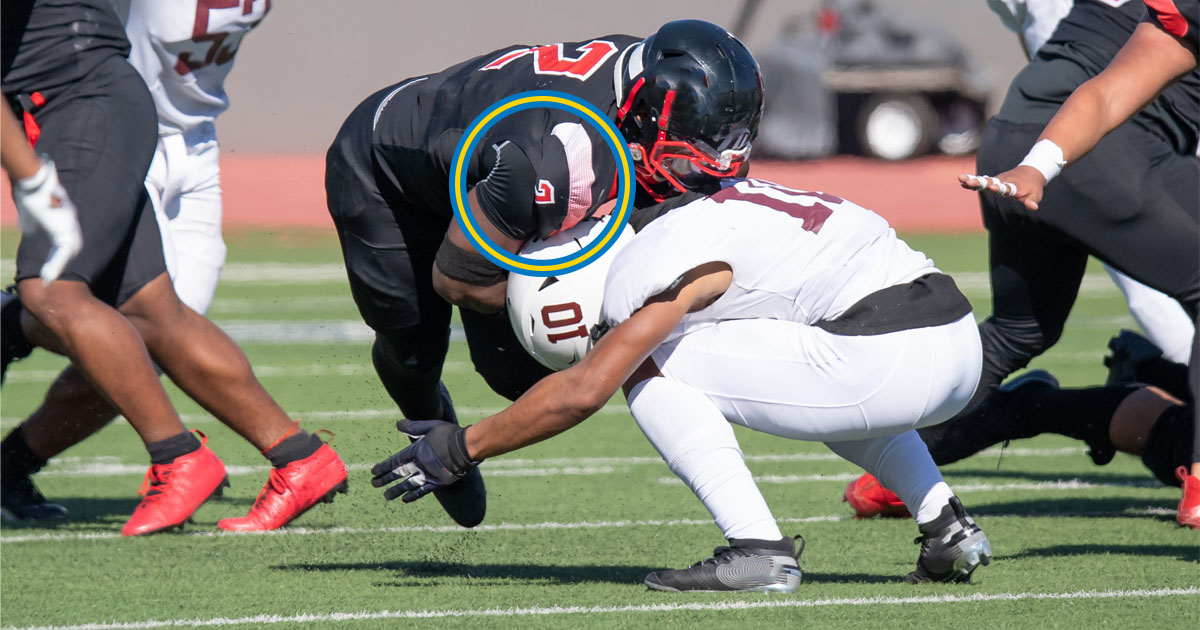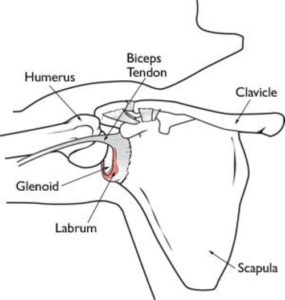Bankart Tear Shoulder Injury

The temperatures are rising, flowers are in bloom, and the world around us is greening up again. That can only mean one thing -- spring football!
As a sideline physician for football teams from De La Salle High School to the NFL’s Philadelphia Eagles, Dr. Joseph Finstein has gained important insights into what parents should look out for as players navigate game-related injuries. In today's post, Dr. Finstein discusses a specific shoulder injury - the Bankart Tear.
What is a Bankart Tear?
Before we dive into the Bankart Tear, it’s important to understand the structure of the shoulder. The joint most people think of as the shoulder is also known as the glenohumeral joint. It is formed where a ball at the top of the humerus, the bone in the upper arm, fits into a shallow cuplike socket in the scapula, or shoulder blade.

Because the socket of the shoulder is shallow, the joint relies on surrounding soft tissues to support it and keep it in place. These key supporting pieces include the rotator cuff, deltoid muscle and the labrum. The rotator cuff is a network of muscles and a common tendon that covers the top of the upper arm bone (humerus), holds it in place, and allows the arm to rotate. The deltoid muscle provides lifting strength to the arm when carrying a load. Finally, the labrum serves as the attachment point for the ligaments that support the shoulder joint and rotator cuff and stabilizes the joint. All together, they give your shoulder joint a greater range of motion than any other joint in the body.
A Bankart Tear happens when the shoulder is dislocated and the inferior glenohumeral ligament in the lower part of the labrum is torn. Younger athletes who sustain a dislocation of the shoulder joint are more susceptible to the tear, and they occur more often in sports that require overhead reaching or, in the case of football, where collisions are common.
How is a Labrum Tear Diagnosed?
In his early blog post Should Pain - Diagnostics & Treatment Options, Dr. Finstein discussed the process of diagnosing shoulder pain. Like other shoulder injuries, patients with a labrum tear can present a number of symptoms, including pain and ache in the shoulder or upper arm, weakness in the shoulder, limited range of motion, or grinding and popping noises. If a Bankart Tear is not properly treated the patient may be susceptible to more and easier shoulder dislocations in the future. For instance, with a large tear, a shoulder dislocation can occur with a sneeze.
When a young athlete suffers a shoulder dislocation, it is usually accompanied by a labrum tear. Multiple dislocations in a season are usually a sure sign that a tear is present.
The first test is usually to check the range of movement of the shoulder and gather information on what sensations the patient feels. A sense that the shoulder is about to dislocate again in certain positions could mean that a labrum tear has occurred.
X-rays and MRIs will also be used in detecting if a tear is present.
"If a Bankart Tear is not properly treated the patient may be susceptible to more and easier shoulder dislocations in the future. For instance, with a large tear, a shoulder dislocation can occur with a sneeze."
- Joseph L. Finstein, MD
What are the Treatment Options?
A Bankart Tear can be treated with both surgical and non-surgical options. However, for athletes who participate in high-contact sports, surgery is often the best recommendation to avoid further dislocation. For an athlete in season, the doctor and patient may choose to brace the shoulder to be able to continue to play throughout the season and get it fixed after the conclusion of the season.
Rest and physical therapy can help repair the labrum tear, but it may not heal in perfect position, leaving the shoulder at greater risk of dislocation. Studies have indicated that athletes who choose non-surgical treatment are far more likely to dislocate the shoulder again and far less likely to make a successful return to their sports career.
Surgical treatment, on the other hand, can result in a more stable shoulder and an excellent chance of the athlete getting back in the game. The surgery may be performed arthroscopically (through poke holes with a camera) or through a standard incision, depending on the injury and situation. However, arthroscopic treatment is most common. Some athletes, particularly those in contact sports, may see more benefit and reliability from an open surgery.
What is the Long Term Prognosis for this type of Labrum Tear?
When diagnosed and treated properly by a Sports Medicine specialist like Dr. Finstein, the prognosis for a Bankart Tear is quite good. More than 90 percent of patients who have a successful surgery return to the field without further dislocations. Recovery and return time will vary by case, as we want to be sure that the shoulder is at full strength and functionality before returning to sports activities.
Why you should see an orthopedist
An orthopedist is trained and licensed to treat your musculoskeletal system. Seeing an orthopedist for a suspected Bankart Tear ensures a correct diagnosis, immediate proper treatment, and no time wasted in the hospital ER.
If you think you or someone you know has a shoulder injury, make an appointment to see Dr. Finstein or one of our region’s other leading orthopedic specialists for a fast and accurate evaluation. Pontchartrain Orthopedics & Sports Medicine also has a Saturday Orthopedic Clinic, available on a walk-in, no appointment basis.
About the Doctor

Dr. Joseph L. Finstein, MD
Joseph L. Finstein, MD specializes in sports medicine, focusing on shoulder, elbow, hip, knee, foot, and ankle injuries. Dr. Finstein completed his Sports Medicine Fellowship at the Rothman Institute at Thomas Jefferson University He is currently the team physician at De La Salle High School. Prior to joining Pontchartrain Orthopedics & Sports Medicine, Dr. Finstein assisted in the care of athletes from the Philadelphia Eagles, Flyers, Phillies, Soul and St. Joseph’s University.
This website is not designed to and does not provide medical advice, medical diagnosis, professional opinion, treatment or services to you or any other person. Through this website and links to other websites, Pontchartrain Orthopedics & Sports Medicine provides general information for educational purposes only. The information provided in this website, or through links to other sites, is not a substitute for medical care. You should not use this information in place of a visit, call, consultation or the advice of your healthcare provider. Pontchartrain Orthopedics & Sports Medicine is not liable or responsible for any advice, course of treatment, diagnosis or any other information, services or product you obtain through this site.

